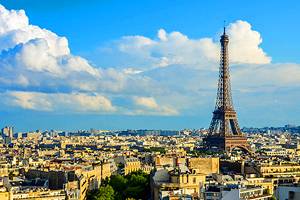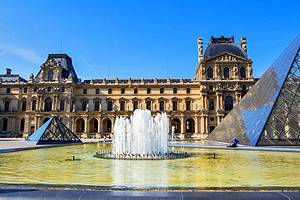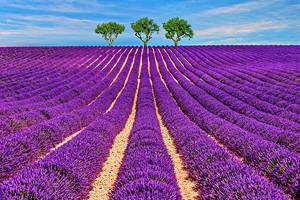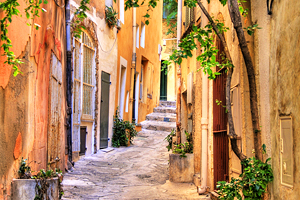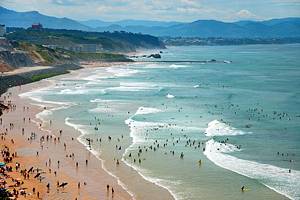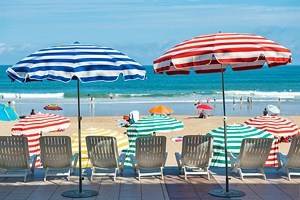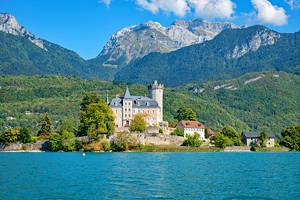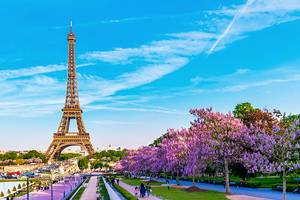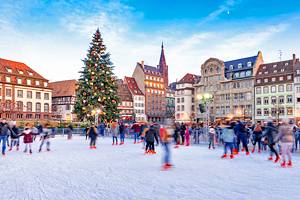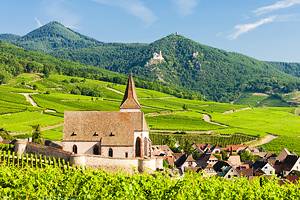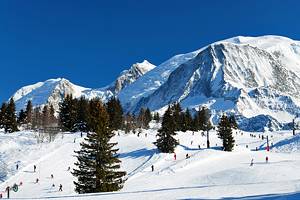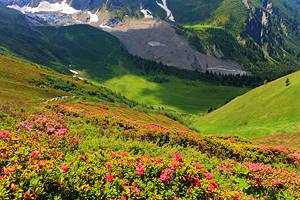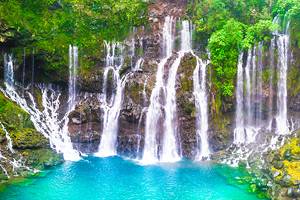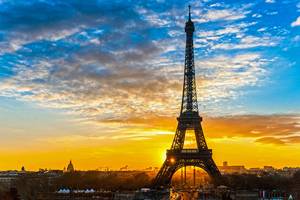Towns in France
Ask 10 Francophiles to name the 10 best towns in France, and you're likely to get 100 different answers. There simply is no definitive list. Although the towns that follow are quite different in size, style, and character, they have certain things in common.
First, they all have that indefinable quality that makes them stand out in a traveler's memory. And they are all more than just a pretty face. They have notable architecture, history, culture, shopping, dining, art, or activities, reasons to spend a day or stay overnight and experience local life. Each of them has enough attractions and things to do that tourists will find them interesting places to visit, not just pass through for photos.
You're sure to find ideas and inspiration for your next trip in this list of the best towns in France.
Honfleur, Normandy
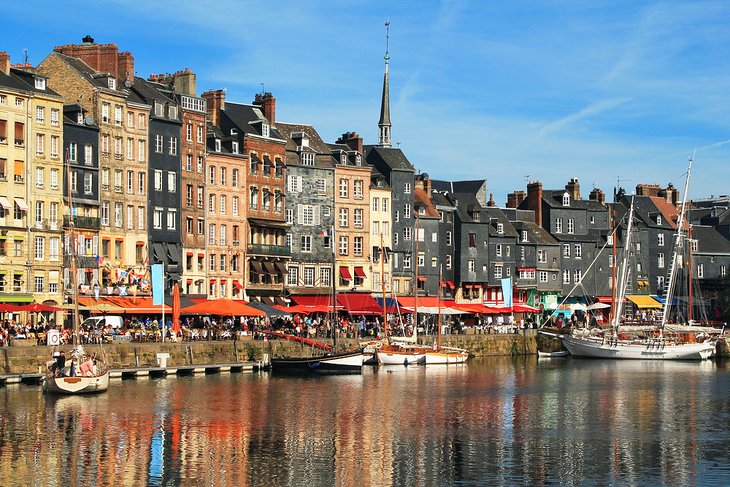
Colorful boats still line Honfleur's harbor on the estuary of the Seine, faced by a row of venerable houses built by merchants anxious to keep an eye on their ships and the harbor activities. It's no wonder the Vieux Bassin is one of the most frequently painted harbors in the world.
Away from the Vieux Bassin, the scenes are just as photo-worthy, with narrow streets of slate-clad and half-timbered buildings, many in lively colors. As you stroll through these picturesque neighborhoods, you'll find small squares with beautifully restored fountains, and churches such as the Gothic Saint-Léonard, whose octagonal tower is decorated with carvings of musical instruments.
The sea has always been instrumental to life in this Normandy seaport, and in another church, the 14th-century Saint-Etienne, the Musée de la Marine presents this seafaring and ship-building history in engaging ways. Visitors from North America will be interested to learn that Samuel de Champlain's explorations of the New World began right here.
The most remarkable of Honfleur's historic churches is Sainte-Catherine, the largest in France to be entirely made of wood, built by local shipwrights. Unusual, too, is its separate belfry, which now houses a collection of religious art.
The unique light of the Seine estuary attracted the Impressionist artists, including Claude Monet, whose mentor Eugène Boudin was born and worked in Honfleur. The Musée Eugène Boudin honors the artist with a large collection of his paintings and drawings, along with works by Impressionists, including Monet, Courbet, Dufy, Millet, Gernez, and others who captured scenes of the Normandy coast.
Although Honfleur has plenty of things to do for tourists, one of its greatest attractions is just finding a table at one of the cafés along the quay, ordering fresh seafood, and becoming part of the relaxed local scene.
Official site: https://www.honfleur-tourism.co.uk
Vence, Alpes-Maritimes
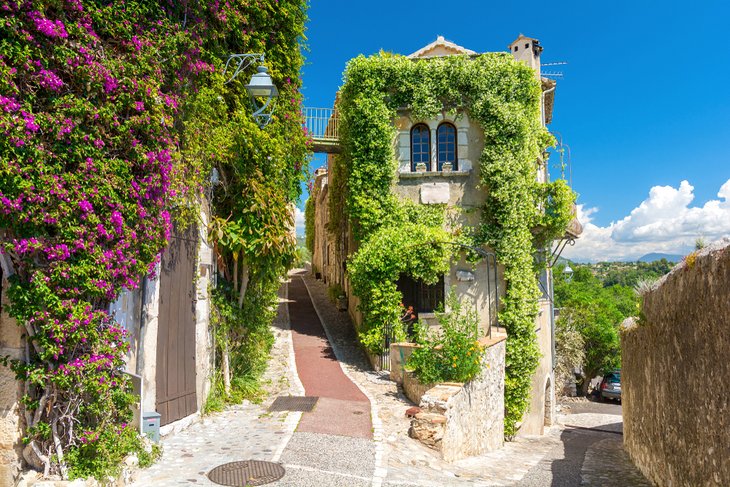
Vence, and the smaller neighboring St. Paul de Vence, seem worlds away from the Riviera scene only a few miles away. These hill towns of narrow cobbled streets and stone houses seem to have been dropped there out of another century.
Vence dates to Roman times, its cathedral built on the site of a Roman temple, re-using stones for the façade that date to the early third century. Today's Rue des Portiques is part of the old Roman road, and you can see columns from a Roman triumphal arch.
A highlight of the 11th-century Romanesque cathedral, along with the beautiful carved stalls and polychrome wooden statues, is a mosaic by Marc Chagall in one of the chapels. Both villages are closely connected to Post-Impressionist artists Marc Chagall, who is buried in St. Paul de Vence, and Henri Matisse.
Matisse lived in Vence late in his life and above the old historic center is the Chapel of the Rosary, which he designed and decorated with dramatic stained-glass windows; Matisse considered the chapel his masterpiece.
Vence's castle houses the Fondation Émile Hugues, a modern and contemporary art museum, and outside the Peyra gate, the Château des Villeneuve is a museum of contemporary art. In St. Paul de Vence, the Fondation Maeght is a museum and sculpture garden with works by Chagall, Calder, and Miró.
The greatest attraction, however, is wandering the old streets and following the original medieval defensive walls of the two Vences, pausing at fountains to drink the famous spring water and watching men play pétanque in the square.
Brioude, Auvergne
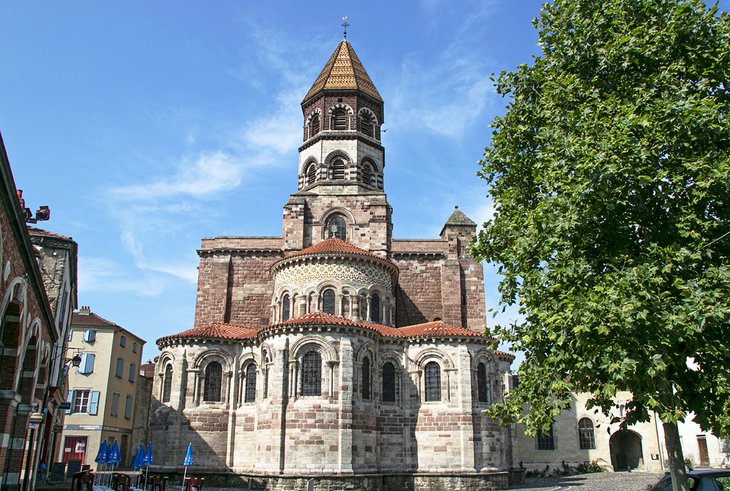
The Auvergne's largest Romanesque church stands out as the focal point of this delightful, if little-known, town. The Basilique Saint-Julien was built in the 11th and 12th centuries, replacing a 4th- or 5th-century shrine to the saint, whose reliquary is in the present church's crypt. The shrine became a major pilgrimage site and later a stop on a minor Santiago de Compostela pilgrimage route.
The basilica is magnificent, with an exterior of patterned brickwork and an interior featuring delicate 12th-century polychrome stonework in the apse, and 9th-to-10th-century mosaics beside the main altar. In St. Michael's chapel are some of the best-preserved 13th-century frescoes in France.
The timber-framed brick Maison de Mandrin, now open to the public as an art gallery, is an example of the many medieval buildings that make Brioude's narrow streets a pleasure to stroll.
So do the many galleries and artisans' shops. The Auvergne has long been a center of lace-making, examples of which you can see at the Hôtel de la Dentelle museum and at Couleurs Dentelle. More crafts are sold, along with other local products, at the Saturday farmers market that fills the squares and streets.
In alternate summers, Brioude is home to the Biennale de l'Aquarelle, France's premier water-color event, bringing artists from across the country.
The surrounding area is worth exploring to see Château de Chavaniac, the birthplace of the Marquis de Lafayette, and charming Blesle, listed among the most beautiful villages of France. Highlights there are the Romanesque Abbey Church of St. Peter and the 13th- and 14th-century stone towers.
Nyons, Drôme
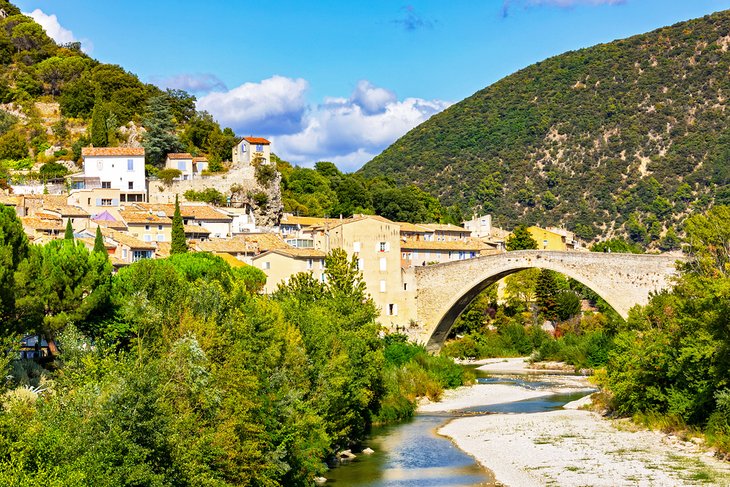
From the graceful, arched medieval bridge spanning the Eygues, to its medieval walls and vaulted, covered passages, Nyons preserves its long history well. It also preserves a fine tradition of producing one of France's finest olive oils. So fine in fact that both the olives and the oils have achieved the coveted Appellation d'origine controlee certification.
Nyons is surrounded by the Baronnies Provençales Regional Nature Park, an area of wild, natural beauty marked by olive groves, orchards, fields of lavender, and forests of oak and pine.
The Pont Roman bridge dates from 1407, remarkable for its 43-meter span in a single 18-meter-high arch. It's not only lovely, but also provides a good vantage point for views of the town. Below it are 18th- and 19th-century olive oil mills. For a unique and fascinating experience, tour the Scourtinerie, the last remaining makers of traditional natural fiber mats to filter and press olive oil.
The old town, inside the 14th-century walls, is filled with medieval buildings; stone-paved streets; covered passages; and the Place des Arcades, an arcaded square that hosts a lively market each Thursday. Look especially for the 14th-century St. James Gate (Porte Saint-Jacques).
The 16th-century Eglise Saint-Vincent, easy to spot for its open-work bell tower, contains some excellent paintings, a carved wooden altar, and a revered statue of the Virgin above the entrance. You can climb to the 13th-century Randonne Tower for sweeping views; in the 19th century, the tower was converted into the chapel of Notre-Dame-de-Bon-Secours.
Nyons offers several experiences related to olives, lavender, and other regional specialties: an 18th-century soap producer; oil mills; an artisanal distillery for herbal oils; and a fragrance garden, where about 200 species of aromatic plants are grown. An olive museum shows ancient and modern olive processes.
Bernay, Normandy
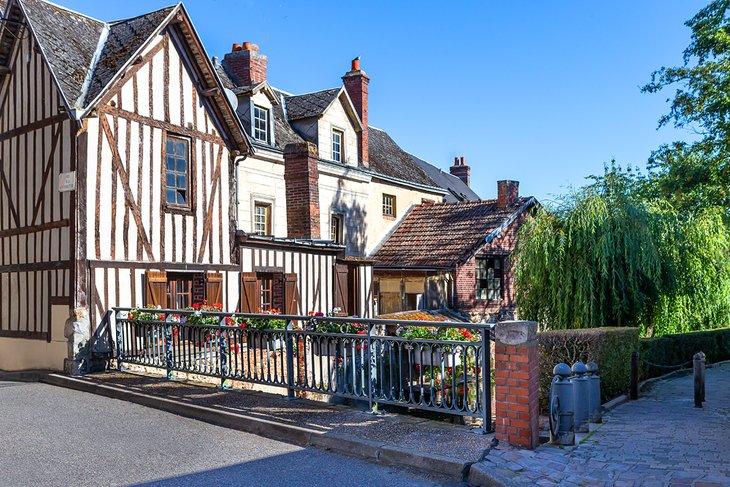
Still clustered around the Benedictine abbey and church from which it grew in the 11th century, Bernay rings of its medieval origins. Half-timbered Norman houses line the narrow streets, especially Rue Thiers and Rue Gaston Folloppe, and overlook the waterways and mills.
One of Normandy's most beautiful Romanesque churches, Abbaye Notre-Dame is the first example of this architectural style in Normandy. Despite rebuilding of portions of it in the Gothic style in the 15th century and a new classical façade in the 1600s, the church still shows the earliest forms of Romanesque building techniques and decoration. Notice especially the beautifully carved capitals.
The former Abbey House, easily distinguished by its checkerboard brick façade, holds the Municipal Museum. The range and quality of the collections is impressive, covering painting, sculpture, archaeology, Egyptology, and decorative arts, with more than 1,000 pieces of Rouen ceramics and paintings by Tintoretto, Constable, and Louis Valtat.
The Basilica of Notre-Dame de la Couture has exceptional windows representing four different centuries of stained-glass art, from the 15th to the 19th centuries. Antiques lovers should head for Rue Gaston Folloppe, where the narrow buildings are filled with antique and secondhand shops. For an impressive view over the city, the rivers, and the valley, climb the steps on Rue du Calvaire.
The Benedictine monks made Bernay a trading center in the 11th century, with regular markets and fairs, traditions that continue today with the Saturday market in Rue Thiers. Festivals enliven the summer season, among them a music festival and a gathering of booksellers in June and a puppet fair in July.
Le Conquet, Brittany
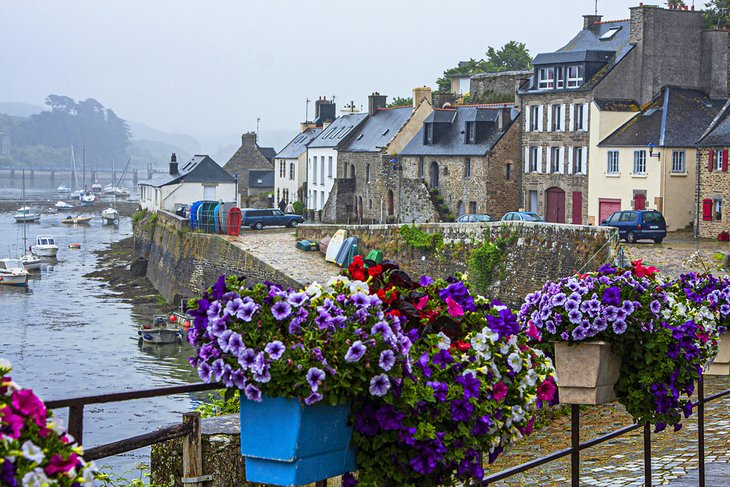
The westernmost town of mainland France, Le Conquet is still an active fishing port, its historic center rising in layers overlooking the harbor. Tightly packed 16th- and 17th- century houses with colorful shutters form a row along the seawall, and at the crest are streets of stone houses and shops.
Noticeable among these is the fortified Maison des Seigneurs at the far end, with its round tower, and the 15th-century Maison des Anglais, also fortified, with a 12-meter curtainwall (look for the holes in the stonework where scaffolding was attached during building). Flower boxes bring color to the atmospheric old streets, and the town has been named a ville fleurie (town of flowers).
Information panels guide you to sights on a Heritage Interpretation route that includes the Church of Saint-Croix and the small stone Chapel of Dom Michel. The arches in the bell towers of both are common in Brittany churches, leaving spaces so sea winds can blow through without damaging the tower.
The quality of Breton crafts makes shopping for souvenirs several cuts above the average. Look on Rue Poncelin for shops and galleries, including Fileur de Verre for handcrafted jewelry and Naturel Déco for luscious leather goods, local food specialties, and high-quality crafts; La Grange is filled with antiques and vintage finds. Among the shops are restaurants serving fresh-caught crabs (a specialty here) and other seafood.
Le Conquet is a good base for exploring the nearby coast and its beaches; the closest are Plage de Portez near the center of town, and Plage de Pors Liogan. Plage des Blancs-Sablons, towards Kermorvan, is the area's largest sandy beach. You'll want to explore the Kermorvan Peninsula, opposite Le Conquet, to see the dramatic coast and the iconic lighthouse.
A scenic route south from Le Conquet leads to more beaches and to Pointe Saint-Mathieu and its 37-meter lighthouse and ruined abbey; just down the road from the lighthouse is a restored German bunker museum. To see this rugged coast from the sea and explore the Parc Naturel Marin d'Iroise, take the daily boat from the port to visit the offshore islands of Ouessant, Molène, and Sein.
Vichy, Auvergne
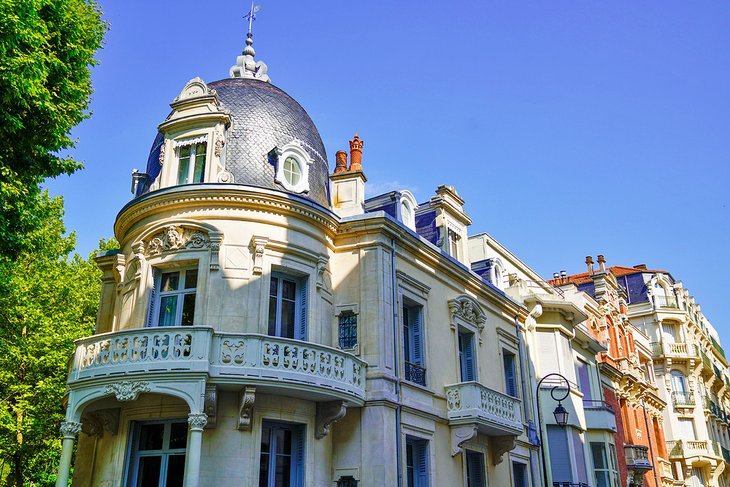
Unlike France's medieval towns, Vichy takes visitors back to more recent eras, with a landscape redolent of late 19th- and early 20th-century leisure. It was built for "taking the waters" in genteel surroundings, with parks, promenades, and elegant cafés to while away the time in between.
The therapeutic qualities of Vichy's springs were appreciated since Roman legions stopped here after a battle in 52 BC, and by the 19th century, Vichy had become the darling of fashionable France. In the 1860s, Napoleon III and his court visited several times and new chalets, pavilions, and a large casino were constructed to house and entertain them.
The next boom was at the turn of the 20th century, when the Opera House, the Hall of Springs, and the neo-Moorish baths opened, the springs were enclosed in an elaborate metal gallery, and Art Nouveau villas were built. Much of Belle Epoque Vichy remains today, making the city a rare architectural period piece.
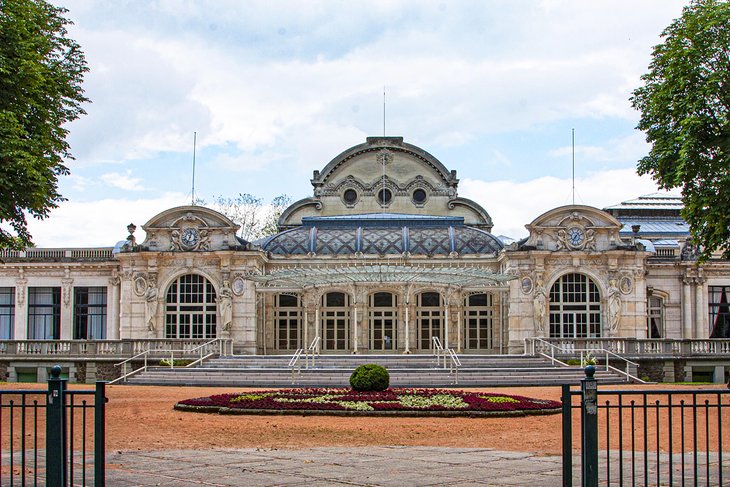
Aficionados of Art Nouveau should stop at the Tourist Office for a booklet detailing the locations of dozens of villas built in the late 19th and early 20th centuries, many with exceptional period architectural and decorative detail. Understandably, Vichy does not make much of its World War II status as capital of Vichy France after the German annexation, but the tourist office has a brochure and map of sites for the curious to seek out.
Visitors can take in several spa experiences: the Hall of the Springs offers six types of thermal water, and there are more springs at the Pavilion of the Célestins, the Park of the Springs, and the neo-Moorish spa. Various thermal baths offer fitness and medical spa programs, and the Vichy Thermal Spa is one of Europe's largest. In 2021, Vichy became part of the "Great Spa Towns of Europe" UNESCO World Heritage Site.
Oingt, Rhône
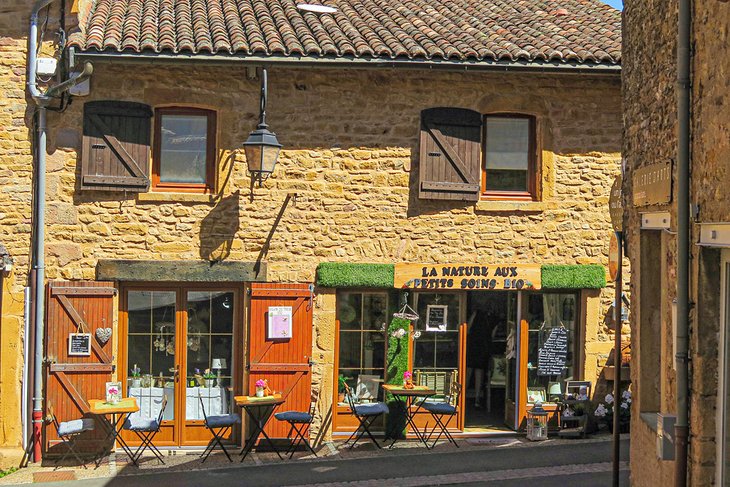
Oingt, one of the three villages that comprise the commune of Val d'Oingt, is pure eye candy. Perched on a hilltop, with a 12th-century tower at its crown, the town is small enough to explore easily on foot, but has enough attractions and diversions to occupy a leisurely day.
The first thing you'll notice is the honey-colored buildings, made of local limestone. This and several other towns in the area make up what's known as the Pays des Pierres Dorées, or Golden Stone Country.
Oingt began as a Roman fort, guarding the approach to Lyon along a Roman road, and was later fortified by a castle built in 1193. Only the tower – the keep – and chapel remain from the original castle; the restored chapel is now the town's church. Its Gothic choir is held on carved columns, and the chapel contains several gilded wooden statues. You can climb the keep for sweeping views of the town, the Azergues valley, and southern Beaujolais.
Below the tower, narrow stone streets wind down through the town, where well-kept old houses are interspersed with artisans' studios, shops, and galleries. A very active community of artists and craftspeople sell their work in Oingt, including ceramics, jewelry, artisanal fragrances, stained glass, metal sculpture, blown glass, pottery, hand weaving, calligraphy, leatherwork, and art in all media.
Only seven kilometers from the village is the Château de Saint-Bernard with five acres of gardens. A dozen themed gardens include a water garden and a witches' garden with poisonous and black plants. Fruit orchards, an extensive rose garden, a daffodil meadow, and a grove of trees selected for their autumn foliage make this a visual feast from spring through late fall.
Saint-Jean-de-Luz, Nouvelle-Aquitaine
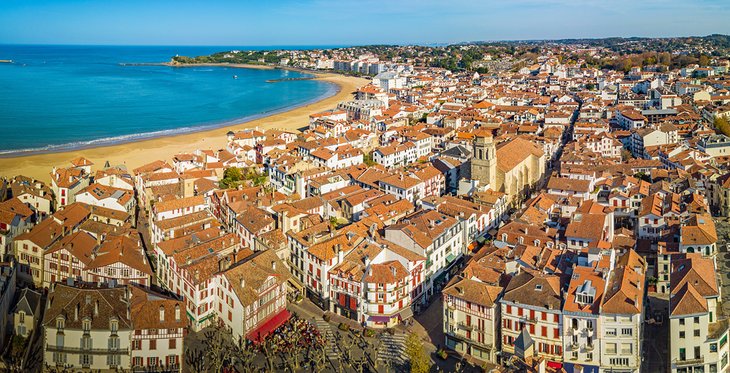
An old fishing town on the Bay of Biscay, Saint-Jean-de-Luz has attractions to visit, but there's an overriding sense that this town was built to enjoy. Its easygoing atmosphere invites going for a swim, dining on fresh seafood, and lazing in cafés to watch the promenade of fashionably dressed locals and tourists.
Those determined on sightseeing should begin at the row of 17th- and 18th-century merchants' houses overlooking the bay from the Quai de L'Infante. One of these, the Maison de l'Infante, was where the Infanta of Spain stayed before her marriage to Louis XIV in 1660.
Inside there's a small museum and gallery of local artists' work, but a more interesting one is the 1643 Maison Louis XIV, easily recognized by its square towers. King Louis XIV stayed here for a month before the wedding, and the house now portrays everyday life of that era. Visitors see the king's bedroom with its gold-embellished bed, and four centuries of furniture, art, and domestic items.
Stroll along Rue Mazarin, Rue Gambetta, and through Place Louis XIV to see more grand homes that Basque shipowners and merchants built in the 17th and 18th centuries. Follow the story of the royal wedding at the church of Saint-Jean-Baptiste, where the ceremony took place, noting the golden Baroque altarpiece and the wooden galleries.
The beach at the harbor is protected from the force of the Atlantic by sea walls, and the town itself invites walking, with pedestrianized shopping streets and tree-shaded squares filled with cafés. Historic signs point out places of interest (pick up an English translation at the Tourist Office). For some more recent history, walk along the Santa-Barbe promenade to see bunkers of the Atlantic Wall, the Nazi's coastal defenses intended to thwart an Allied invasion in World War II.
Kaysersberg, Alsace
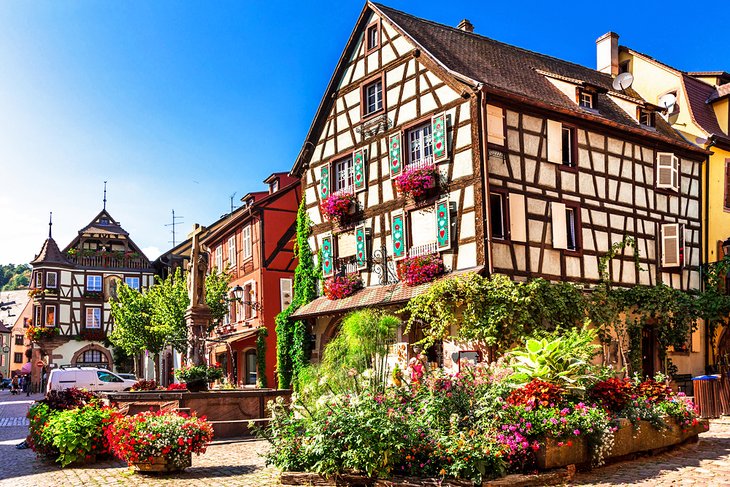
The colorful half-timbered buildings of Kaysersberg seem too perfect to be anything but a stage set, but most of them have been here since the Middle Ages. In the streets lined with them, look especially for the unusual architectural details of Maison Loewert and Maison Faller-Brief.
The most photogenic spot in this most photogenic town is the Pont Fortifie, a bridge bordered by colorful houses. In the summer, expect homes to be decorated with window boxes of bright flowers.
Beside the Constantin Fountain, Eglise de l'Invention de la Sainte-Croix is a good example of the transition from Romanesque to Gothic churches. The main portal, with its 13th-century carved capitals and figures in the tympanum, is Romanesque, while inside you'll find elements of both styles. The magnificent late-medieval carved and gilded altarpiece is from the 16th century, and behind it in the chancel are some fine stained-glass windows.
Built even earlier is the Kaysersberg Castle, from around 1200 when the area was part of the Holy Roman Empire. Its enormous keep is circular, with walls more than four meters thick. One hundred steps lead to the top for magnificent views, and below, inside the curtain walls, is a manor house with Gothic windows.
A small, but interesting historical museum displays Neolithic tools and Roman artifacts discovered locally, and a polychromed wood sculpture of Christ from the 15th century.
To complete the sense that you've walked into a fairy tale, visit Kaysersberg in December, when the houses and streets are decked with evergreen boughs and sparkling lights. On weekends the streets are filled with tiny log cabins where quality handmade gifts and foods are sold. Don't leave without sampling the local specialties, Christmas cookies called bredeles and big crown-shaped kougelhopf cakes.



